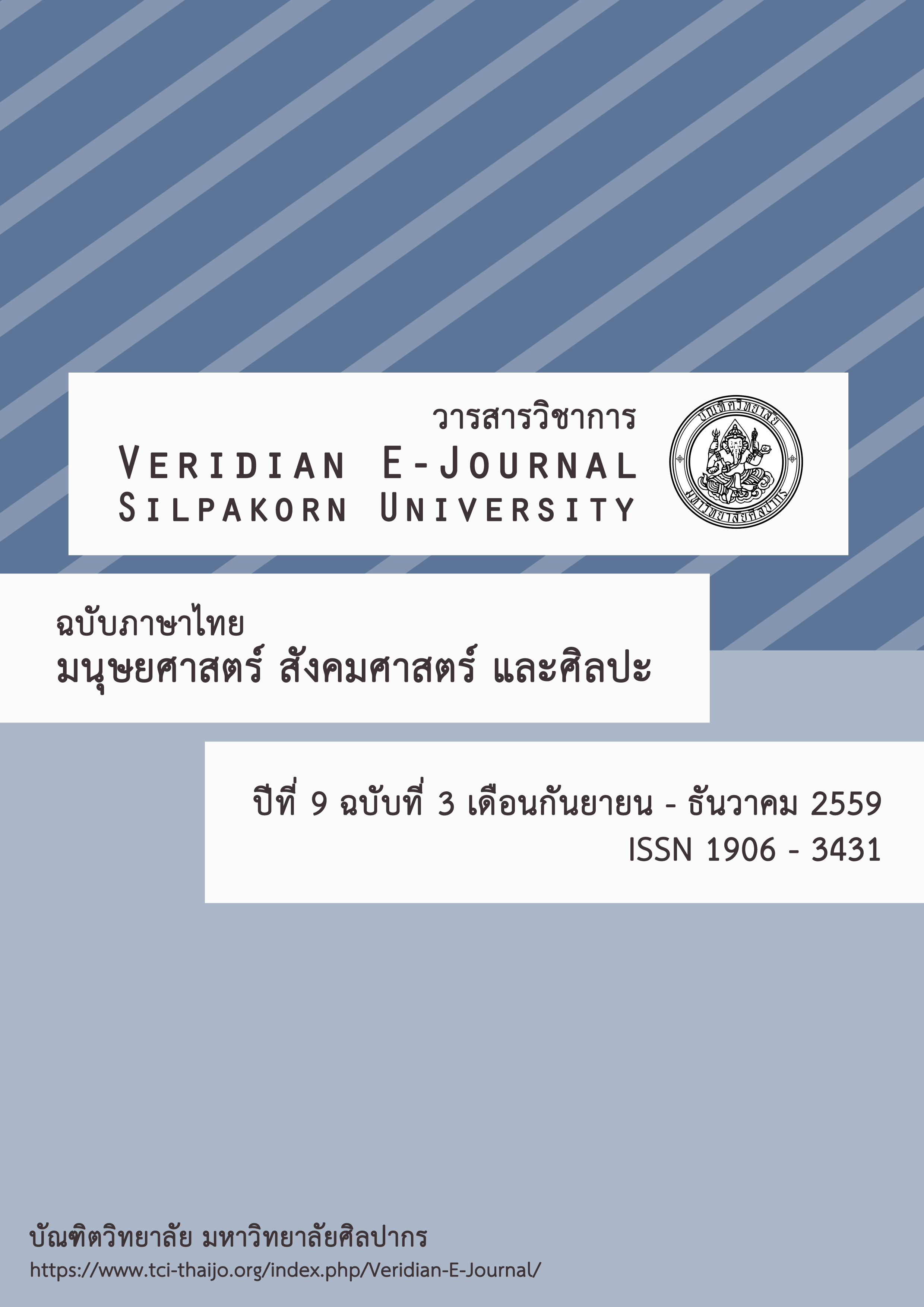การพัฒนารูปแบบการเรียนรู้สร้างสรรค์ด้วยปัญญาเพื่อส่งเสริมความสร้างสรรค์ สำหรับนักศึกษาครู
Main Article Content
บทคัดย่อ
การศึกษาวิจัยครั้งนี้มีวัตถุประสงค์เพื่อ 1) พัฒนาและทดสอบประสิทธิภาพของรูปแบบการเรียนรู้สร้างสรรค์ด้วยปัญญา 2) ประเมินประสิทธิผลของรูปแบบการเรียนรู้สร้างสรรค์ด้วยปัญญา ดังนี้ 2.1)เปรียบเทียบผลสัมฤทธิ์ด้านความรู้รายวิชาการจัดการเรียนรู้และการจัดการชั้นเรียนก่อนและหลังการเรียนรู้ด้วยรูปแบบการเรียนรู้สร้างสรรค์ด้วยปัญญา 2.2) ศึกษาความสามารถในการเขียนแผนการจัดการเรียนรู้สร้างสรรค์ด้วยปัญญา 2.3) เพื่อศึกษาความสามารถในการปฏิบัติตามแผนการจัดการเรียนรู้สร้างสรรค์ด้วยปัญญา และ2.4) ความคิดเห็นของนักศึกษาครูที่มีต่อรูปแบบการจัดการเรียนรู้สร้างสรรค์ด้วยปัญญา กลุ่มตัวอย่างได้มาจากการสุ่มแบบกลุ่ม คือ นักศึกษาชั้นปีที่ 2 คณะครุศาสตร์ มหาวิทยาลัยราชภัฏลำปาง กำลังศึกษาในภาคเรียนที่ 2 ปีการศึกษา 2557 จำนวน 23 คน เครื่องมือที่ใช้ในการวิจัย คือ รูปแบบการเรียนรู้สร้างสรรค์ด้วยปัญญาที่ผู้วิจัยสร้างขึ้น เรียกว่า LRU Model แผนการจัดการเรียนรู้ แบบทดสอบความรู้ แบบประเมินการเขียนแผนการเรียนรู้และแบบประเมินความสามารถในการปฏิบัติตามแผนการเรียนรู้ วิเคราะห์ข้อมูลโดยการทดสอบค่าที ค่าเฉลี่ย ส่วนเบี่ยงเบนมาตรฐาน และการวิเคราะห์เนื้อหา
ผลการวิจัยพบว่า
1) รูปแบบการเรียนรู้สร้างสรรค์ด้วยปัญญา มีชื่อว่า LRU Model มี 3 ขั้นตอน คือ 1) การกำหนดเป้าหมายการเรียนรู้ (L) 2) การวิจัยเพื่อกำหนดสิ่งแวดล้อมการเรียนรู้ (R ) และ3) การใช้วิจัยเชิงปฏิบัติการเพื่อประเมินพัฒนาการเรียนรู้ (U ) รูปแบบการเรียนรู้สร้างสรรค์ด้วยปัญญามีประสิทธิภาพตามเกณฑ์เท่ากับ 80.26/79.53
2) ประสิทธิผลของรูปแบบการเรียนรู้สร้างสรรค์ด้วยปัญญา มีดังนี้ 2.1) นักศึกษาครูมีผลสัมฤทธิ์ด้านความรู้หลังเรียนสูงกว่าก่อนเรียนด้วยรูปแบบการเรียนรู้สร้างสรรค์ด้วยปัญญา อย่างมีนัยสำคัญทางสถิติที่ระดับ .01 2.2) นักศึกษาครูมีความสามารถในการเขียนแผนการจัดการเรียนรู้สร้างสรรค์ด้วยปัญญา ในระดับการเรียนรู้พอใช้ คือ การปฏิบัติในสถานการณ์ใหม่และวิเคราะห์มากที่สุด 2.3) นักศึกษาครูมีความสามารถในการปฏิบัติตามแผนการจัดการเรียนรู้สร้างสรรค์ด้วยปัญญา ในระดับการเรียนรู้พอใช้ คือ การปฏิบัติในสถานการณ์ใหม่และวิเคราะห์มากที่สุด และ2.4) ความคิดเห็นของนักศึกษาครูที่มีต่อรูปแบบการเรียนรู้สร้างสรรค์ด้วยปัญญา ภาพรวมเห็นด้วยในระดับมาก โดยด้านกิจกรรมเห็นด้วยในระดับมากที่สุด รองลงมาเห็นด้วยในระดับมากคือด้านประโยชน์ที่ได้รับ และด้านบรรยากาศตามลำดับ
The purposes of this research were: 1) to develop and assess the efficacy of a constructionist learning model (LRU Model); 2) to evaluate the effectiveness of the model with regard to the following aspects: 2.1) to compare the knowledge acquired from Learning Management and Classroom Management prior to and after LRU model–based instruction; 2.2) to study the students’ ability to make an LRU model–based lesson plan; 2.3) to study their ability to execute the plan and 2.4) to collect their opinions on the LRU Model. The sample selected using a cluster sampling method, comprised 23 sophomore students from the Faculty of Education of Lampang Rajabhat University in the second semester of the 2014 academic year. The instruments employed in this research were the LRU Model, a lesson plan, a knowledge test, a lesson plan–making assessment form and a lesson plan–execution assessment form. The data were analyzed with dependent t-test, mean ( ̅x) standard deviation (S.D.) and content analysis.
The results of this research were as follows:
1. The constructionist learning model called LRU Model comprises 1) learning target (L), 2) research to identify the learning environment (R), and 3) use of action research to improve learning (U). The effectiveness of the LRU learning model met the criteria with a score of 80.26/79.53;
2. The LRU Model was effective with regard to the following aspects: 2.1) The knowledge level after taking Learning Management and Classroom Management was higher than before with a statistically significant difference level of .01; 2.2) The students’ ability to make a lesson plan after studying with the LRU model was at a medium level. Their highest scores were in application to a new situation and analysis; 2.3) The students’ ability to execute their lesson plan was at the medium level. Their highest scores were in application to a new situation and analysis 2.4) The students’ opinions toward the LRU model as a whole were at a high level of agreement. Considering each aspect separately, they agreed at the highest level on activities and agreed at a high level on benefits gained and atmosphere.

